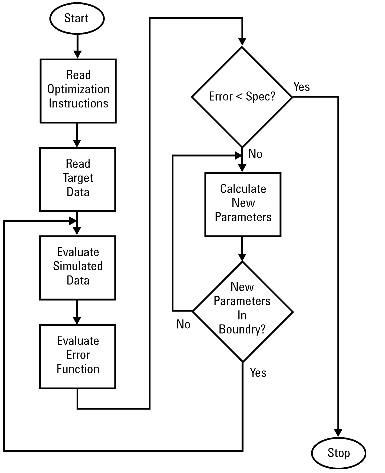Print version of this Book (PDF file)
Optimization in IC-CAP
Optimization is the process of creating an optimum set of model parameter values. This optimum parameter set is created by adjusting the initial model parameter values in an iterative process. The process continues until simulated output data matches the actual measured output data within specified tolerances.
Past versions of IC-CAP contained four optimizers: Levenberg-Marquardt, Random, Hybrid, and Sensitivity Analysis. IC-CAP 2004 has added nine new optimizers. For more information, see Table 22.
Note
Given a set of measured data, the optimizer iteratively solves for a set of model parameters which produce simulated data that optimally approximates the measured data.
The algorithm works as follows:
| 1 | Using the Circuit description and model parameter values extracted from measured data, the optimizer invokes the currently selected simulator to obtain a set of simulated data corresponding to the measured data used in the extraction process. This step is called function evaluation. |
| 2 | The optimizer compares the simulated and measured data and calculates the RMS error between them. |
| 3 | Based on the results, the optimizer calculates a new set of model parameter values and again compares the simulated and measured data. |
| 4 | This process continues with another function evaluation until the RMS error between the simulated and measured data either falls within a specified range, or no further improvement is possible. |
Figure 22 illustrates the optimization process.
